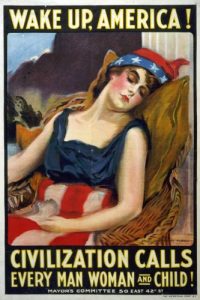
The Library is closed today, beloved patrons, in honor of Veteran’s Day. As we mentioned before, the origins of the holiday are rooted in the armistice that ended hostilities on the western front during the First World War, on November 11, 1918.
Generally speaking, the United States’ involvement in the First World War was quite an ambivalent one; it sold arms to both the Allied and Central Powers, even while it remained nominally neutral, and only sent soldiers in early 1918. As a result, we don’t talk about the First World War nearly as frequently, or as in-depth as we do the Second World War, despite the fact that it was, perhaps, the most impactful event of the 20th century.
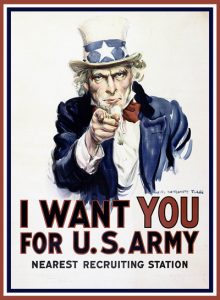
Any world map owes more to the First World War than, perhaps, to any event since. As a result of the Treaty of Versailles, which ended the war in Europe, the nations of the Middle East, including Iraq, Iran, Syria, and Saudi Arabia were created (badly–the mapmakers had never been to that area of the world, and had no idea about the real populations of the places they defined). Czechoslovakia and Yugoslavia were established. Germany was significantly reduced in size and industrial potential, which became a staple demand of the Nazi party in later years. The Russian Revolution, which occurred in 1917 as a result of the extreme deprivations of the war, formed the Soviet Union; though the Cold War wouldn’t officially start for another 36 years, tensions between the Soviets and the United States were present even in 1918.
In somewhat lighter news, the spork–or, at least, it’s grandfather–was utilized by the American Army, after a model invented earlier in the century known as the “runcible spoon” after an Edward Lear poem. Hoping to save on metal that could be used for munitions, the Army combined a spoon and fork with rivets for soldiers, giving rise to the most entertaining piece of flatware available.

The First World War is considered the first “literate” war, meaning that the vast majority of soldiers were able to read and write, and, as a result, there are a wealth of memoirs, letters, and novels available to help us learn about the War. We’ve all heard about All Quiet on the Western Front and A Farewell to Arms, but did you know that J.R.R. Tolkien based The Lord of the Rings on his experiences as an ambulance driver during the First World War?
So this Veterans’ Day, here are five books about the First World War and it’s enormous legacy to help you understand why this day, above all other days, is one to be remembered:

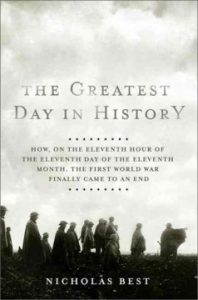 The Greatest Day in History: Nicholas Best charts the events leading up to Armistice Day 1918, the day the First World War finally came to an end, using newspaper sources, private diaries and letters, as well as later memoirs and novels in order to show what a life-changing day November 11, 1918 was, not only for the men at the front, but for the nurses and drivers behind the lines, the government officials who had directed the war for over four years, and the civilians at home who had suffered through total war in their own way. From prisons to Parliament, from ocean-bound ships to mud-stained hospitals, the voices in this book bring the end days of the First World War to life, and help us realize its full impact. And because Best offers each voice without a great deal of commentary, these voices are allowed to speak fully for themselves in a way that becomes utterly haunting.
The Greatest Day in History: Nicholas Best charts the events leading up to Armistice Day 1918, the day the First World War finally came to an end, using newspaper sources, private diaries and letters, as well as later memoirs and novels in order to show what a life-changing day November 11, 1918 was, not only for the men at the front, but for the nurses and drivers behind the lines, the government officials who had directed the war for over four years, and the civilians at home who had suffered through total war in their own way. From prisons to Parliament, from ocean-bound ships to mud-stained hospitals, the voices in this book bring the end days of the First World War to life, and help us realize its full impact. And because Best offers each voice without a great deal of commentary, these voices are allowed to speak fully for themselves in a way that becomes utterly haunting.
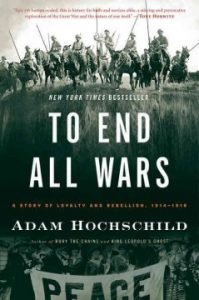 To End All Wars : A Story of Loyalty and Rebellion, 1914-1918: “The War to End All Wars” is a phrase that gets thrown around a lot when we talk about the First World War, but no one ever stops to think about what participants truly meant when they used the phrase. The First World War was not fought in order to bring unending peace–instead, it was so brutal, so terrifying, and so destructive that it was thought that no war would ever be able to surpass it. Adam Hochschild’s ground-breaking work focuses on another aspect of the war that offers new insight into the phrase–by looking at those conscientious objectors who were imprisoned, punished, and ostracized for their stance against violence. This is not a typical history of pacifism, however, Hochschild shows protestor’s stories within the context of the war itself. Many of those who spoke out publicly against the war had family members off fighting, showing yet another way in which war could tear families apart. With infinite sympathy and customary insight, Hochschild’s book is a vital addition to the history of the First World War, and those who fought to end it.
To End All Wars : A Story of Loyalty and Rebellion, 1914-1918: “The War to End All Wars” is a phrase that gets thrown around a lot when we talk about the First World War, but no one ever stops to think about what participants truly meant when they used the phrase. The First World War was not fought in order to bring unending peace–instead, it was so brutal, so terrifying, and so destructive that it was thought that no war would ever be able to surpass it. Adam Hochschild’s ground-breaking work focuses on another aspect of the war that offers new insight into the phrase–by looking at those conscientious objectors who were imprisoned, punished, and ostracized for their stance against violence. This is not a typical history of pacifism, however, Hochschild shows protestor’s stories within the context of the war itself. Many of those who spoke out publicly against the war had family members off fighting, showing yet another way in which war could tear families apart. With infinite sympathy and customary insight, Hochschild’s book is a vital addition to the history of the First World War, and those who fought to end it.
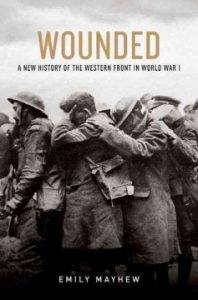 Wounded: A New History of the Western Front in World War I: The First World War helped scientists and military tacticians develop whole news ways to kill and main–the flame-thrower, poison gas, and aerial bombardments were all created by and for the First World War. But, along with those developments came rapid advancements in medicine that still change lives today, from plastic surgery to blood transfusions, from skin grafting to prosthetic limbs. Emily Mayhew’s book turns away, largely, from the destruction of war to look at the medical network that was established with stunning speed in order to treat those injured by war. She focuses not necessarily on battle fronts, but on the journey of the wounded, from the front to mobile hospitals and triage units to base hospitals, creating a whole new kind of history of the First World War that reminds us of some of its more positive and enduring legacies.
Wounded: A New History of the Western Front in World War I: The First World War helped scientists and military tacticians develop whole news ways to kill and main–the flame-thrower, poison gas, and aerial bombardments were all created by and for the First World War. But, along with those developments came rapid advancements in medicine that still change lives today, from plastic surgery to blood transfusions, from skin grafting to prosthetic limbs. Emily Mayhew’s book turns away, largely, from the destruction of war to look at the medical network that was established with stunning speed in order to treat those injured by war. She focuses not necessarily on battle fronts, but on the journey of the wounded, from the front to mobile hospitals and triage units to base hospitals, creating a whole new kind of history of the First World War that reminds us of some of its more positive and enduring legacies.
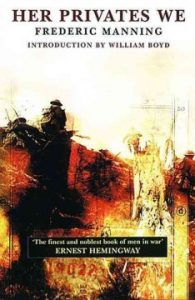 Her Privates We: 1929 was a big year for war fiction; people who had served in the war were finally able to discuss the events in a comprehensive way, and the reading public were eager “to never forget”–or, in the case of people who were too young to serve, were eager to hear stories of the Front. Frederic Manning’s book was published in this first wave of war literature, along with Erich Maria Remarque’s All Quiet on the Western Front. Manning was an Australian poet who served with an Irish regiment throughout the war, and this book was meant both as a tribute to the men with whom he served, and as a way for him to cope with the horrors they all endured. For me, it is one of the best books to come out of the First World War. Manning didn’t try to dress up his experiences–there are plenty of expletives (which got the book expurgated and occasionally banned in its early years), as well as men’s frank conversations about prostitutes, death, and lice. But what also comes through is the absolute devotion that Manning felt for the men with whom he served, and the strange beauty that he was able to find in the midst of the war. His prewar career in writing poems about nature gave him the strength to write about the front as a place that was at once terrifying and haunting and strangely captivating, and the result is a book that will take your breath away–I know it did for me.
Her Privates We: 1929 was a big year for war fiction; people who had served in the war were finally able to discuss the events in a comprehensive way, and the reading public were eager “to never forget”–or, in the case of people who were too young to serve, were eager to hear stories of the Front. Frederic Manning’s book was published in this first wave of war literature, along with Erich Maria Remarque’s All Quiet on the Western Front. Manning was an Australian poet who served with an Irish regiment throughout the war, and this book was meant both as a tribute to the men with whom he served, and as a way for him to cope with the horrors they all endured. For me, it is one of the best books to come out of the First World War. Manning didn’t try to dress up his experiences–there are plenty of expletives (which got the book expurgated and occasionally banned in its early years), as well as men’s frank conversations about prostitutes, death, and lice. But what also comes through is the absolute devotion that Manning felt for the men with whom he served, and the strange beauty that he was able to find in the midst of the war. His prewar career in writing poems about nature gave him the strength to write about the front as a place that was at once terrifying and haunting and strangely captivating, and the result is a book that will take your breath away–I know it did for me.
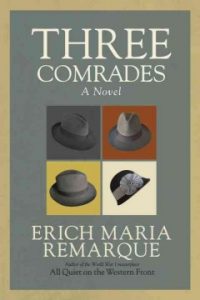 Three Comrades: Most people I know had to read Erich Maria Remarque’s All Quiet on the Western Front as part of their studies of the First World War, and while it is indeed a powerful and insightful book about the German experience of the war, very few people realize that the book wasn’t Remarque’s only novel. In fact, he wrote three books about German veterans of the First World War, culminating with Three Comrades. This novel is set in Germany during the early years of the Nazi rise to power, and tells the story of three veterans who run a car repair business, fall in love, have adventures, and continually cope with the war they can’t forget, and the world it forged. Though not specifically about the First World War, Remarque’s book is a deeply moving, stunningly emotional reminder that no war is ever over for those who lived through it. Even as these three inseparable friends race cars and swindle hypocritical customers and seek out cheap drinks, the war is a constant presence with them. The Library’s Classic Book Group read this novel, and universally agreed that is was one of our favorite books to date, and one that lingered long after the final page had turned.
Three Comrades: Most people I know had to read Erich Maria Remarque’s All Quiet on the Western Front as part of their studies of the First World War, and while it is indeed a powerful and insightful book about the German experience of the war, very few people realize that the book wasn’t Remarque’s only novel. In fact, he wrote three books about German veterans of the First World War, culminating with Three Comrades. This novel is set in Germany during the early years of the Nazi rise to power, and tells the story of three veterans who run a car repair business, fall in love, have adventures, and continually cope with the war they can’t forget, and the world it forged. Though not specifically about the First World War, Remarque’s book is a deeply moving, stunningly emotional reminder that no war is ever over for those who lived through it. Even as these three inseparable friends race cars and swindle hypocritical customers and seek out cheap drinks, the war is a constant presence with them. The Library’s Classic Book Group read this novel, and universally agreed that is was one of our favorite books to date, and one that lingered long after the final page had turned.
Until next week, beloved patrons–happy reading!





 November has arrived and with it, longer nights, cooler days and fading colors on the trees. But November doesn’t always have to be about withering or fading. Sometimes, November can be about creation and the making of something long percolating, and that is precisely what NaNoWriMo is about.
November has arrived and with it, longer nights, cooler days and fading colors on the trees. But November doesn’t always have to be about withering or fading. Sometimes, November can be about creation and the making of something long percolating, and that is precisely what NaNoWriMo is about.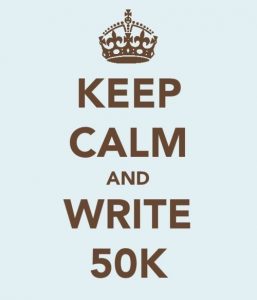
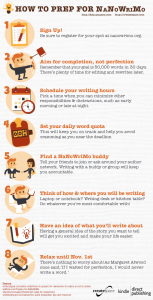
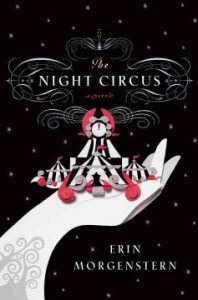
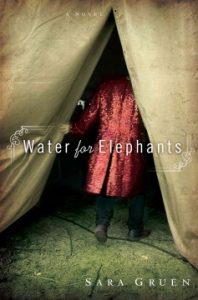
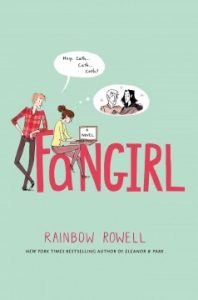
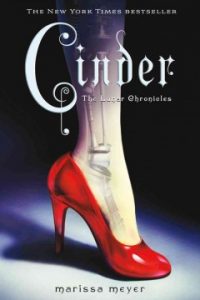
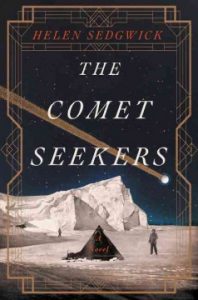 The Comet Seekers
The Comet Seekers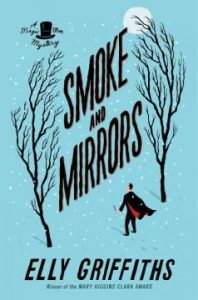 Smoke and Mirrors
Smoke and Mirrors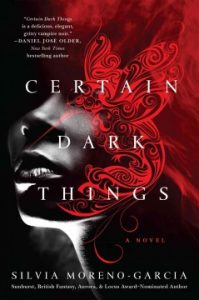
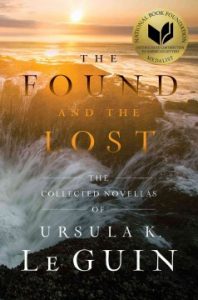 The Found and the Lost: The Collected Novels of Ursula K. Le Guin
The Found and the Lost: The Collected Novels of Ursula K. Le Guin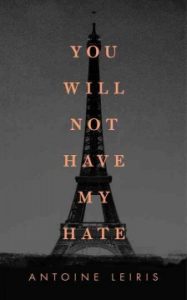 You Will Not Have My Hate
You Will Not Have My Hate

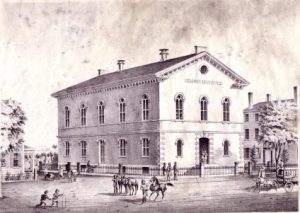
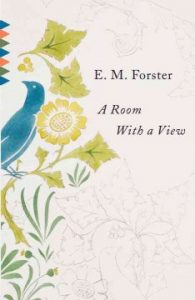
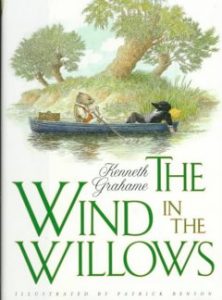 The Wind in the Willows
The Wind in the Willows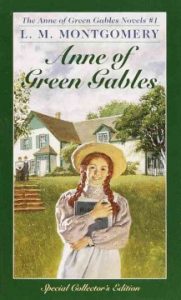 Anne of Green Gables
Anne of Green Gables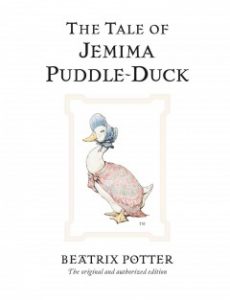 The Tale of Jemima Puddle-Duck
The Tale of Jemima Puddle-Duck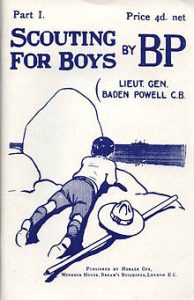 Scouting for Boys
Scouting for Boys

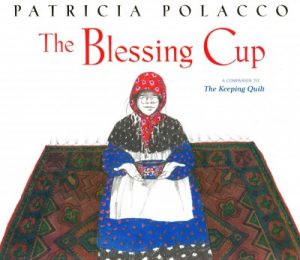 escape from Russia after her Jewish family had been ordered to leave the country. Anna’s family must leave almost all of their possessions behind, but they manage to bring with them a tea set that has always brought special blessings to their family. This book is both a timely reminder of the reality of life as a refugee and a life-affirming look at what can be accomplished through the kindness of strangers.
escape from Russia after her Jewish family had been ordered to leave the country. Anna’s family must leave almost all of their possessions behind, but they manage to bring with them a tea set that has always brought special blessings to their family. This book is both a timely reminder of the reality of life as a refugee and a life-affirming look at what can be accomplished through the kindness of strangers.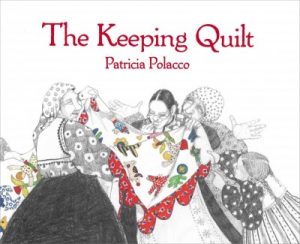 The Keeping Quilt
The Keeping Quilt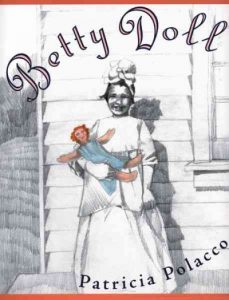 Skipping ahead a couple of generations,
Skipping ahead a couple of generations, 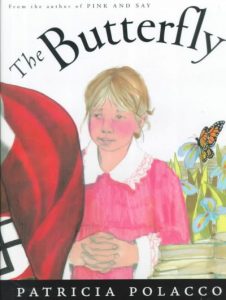 Even though she is an author for children, Patricia Polacco does not hesitate to tackle the big, sad stories of history. In addition to writing about her family’s refugee experience, she shares the story of her aunt’s experience with the French Resistance during the Nazi occupation of France in
Even though she is an author for children, Patricia Polacco does not hesitate to tackle the big, sad stories of history. In addition to writing about her family’s refugee experience, she shares the story of her aunt’s experience with the French Resistance during the Nazi occupation of France in 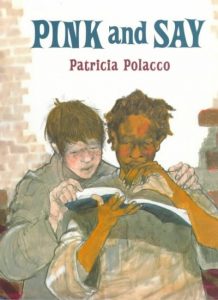 With Veteran’s Day just around the corner, I can’t think of a better time to read
With Veteran’s Day just around the corner, I can’t think of a better time to read 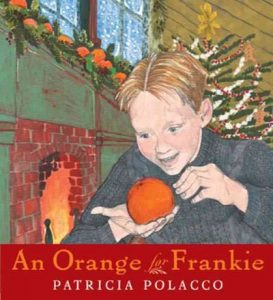 While I’m not quite yet ready for holiday books, I also want to mention, as a bonus, that if you’re looking for a charming Christmas story this year, I’d suggest you take a look at
While I’m not quite yet ready for holiday books, I also want to mention, as a bonus, that if you’re looking for a charming Christmas story this year, I’d suggest you take a look at